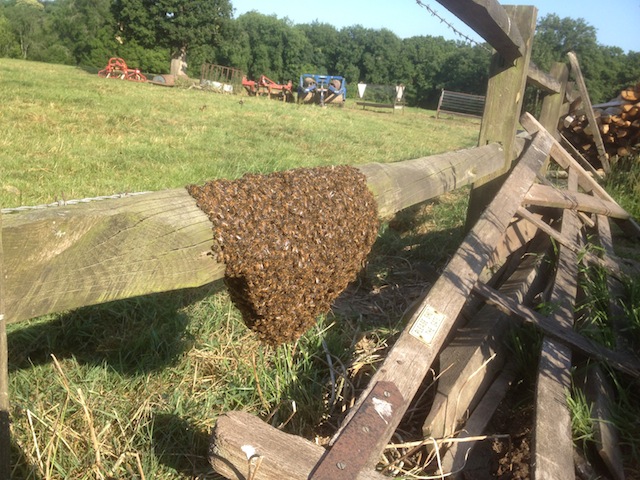Swarm Collection
Swarms
If a swarm of bees has landed in your garden or somewhere on your property (or maybe even on your car!) don't panic, beekeepers can help. Many local beekeepers will gladly come and collect swarms, often free of charge, and give them a good home in one of their apiaries. Find a local beekeeper on this map: BBKA Save the Bees
This is what a swarm of honeybees looks like - not to be confused with bumblebees or wasps, which don't swarm in this manner. Swarming is the way honeybees multiply to create new nests - during spring and summer, new queen bees hatch and leave the old nest along with a number of worker bees and drones, in search of a new home. On the way, they usually rest up wherever they can for anything up to a few days, while the "scout bees" go off in search of the perfect permanent home (a hollow tree or suchlike is their preferred natural habitat).
Swarming bees are interested in only one thing - finding a new home - and are extremely unlikely to be aggressive as long as you leave them in peace. They will have filled up their stomachs with honey before leaving the parent nest, and consequently are usually in a fairly mellow, drowsy mood (just like us humans after a hearty Sunday lunch!)
Swarming bees are interested in only one thing - finding a new home - and are extremely unlikely to be aggressive as long as you leave them in peace. They will have filled up their stomachs with honey before leaving the parent nest, and consequently are usually in a fairly mellow, drowsy mood (just like us humans after a hearty Sunday lunch!)
Our very low carbon footprint!
Our honey is locally produced, processed and sold – in other words there is a very low carbon footprint. Most commercially produced honey is a blend of honeys from across the EU or even across the world.